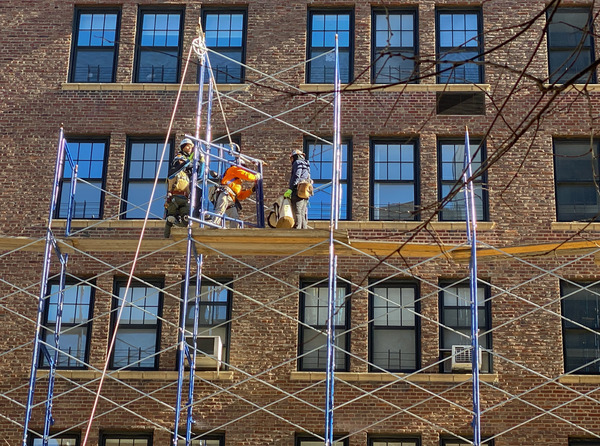Enacted in the early 20th century, New York’s Scaffold Law was designed to protect workers involved in building, repairing, or demolishing buildings or other structures. It requires contractors, owners, and their agents to provide proper scaffolding, hoists, stays, ladders, slings, hangers, blocks, pulleys, braces, irons, ropes, and other devices to ensure workers’ safety.
Keep reading to explore the nuances of New York’s Scaffold Law and how it significantly influences construction accident claims across the state. Call our New York construction accident lawyers at (212) 741-3800 if you or a loved one were hurt.
Liability under the Scaffold Safety Law
New York City’s Scaffold Law law imposes absolute liability on employers and property owners for any gravity-related injuries that workers suffer due to inadequate or unsafe scaffolding and other equipment. If the equipment provided fails to conform to safety standards or is not operated safely, and a worker is injured, the employer or property owner can be held liable for damages without the injured party proving negligence.
| Overview of proving negligence
To successfully prove negligence, the injured party (plaintiff) must establish four key elements:
|
How the Scaffold Law impacts construction accident claims
One of the primary impacts of the New York State Scaffold Law is the protection it offers workers. Holding employers and property owners liable for elevation-related injuries ensures workers have a powerful means to seek compensation for injuries sustained due to falls or falling objects, which is common in construction sites.
The law emphasizes rigorously adhering to safety standards for contractors and property owners. It compels them to ensure all safety measures are in place and functioning properly to prevent accidents. Failure to comply can lead to substantial financial liability in the event of a worker’s injury.
While the Scaffold Law provides significant protections for workers, it has been debated among industry stakeholders. Critics argue that the absolute liability standard increases construction costs and insurance premiums. Supporters, however, assert that the law is essential for ensuring stringent safety measures, which ultimately protect workers and save lives.
Hurt on a construction site? We’re ready to build your claim.
The New York State Scaffold Law is a critical element of New York’s legal landscape. It provides robust protections for construction workers while imposing stringent responsibilities on employers and property owners.
The Weinstein Law Group specializes in construction accident claims and has extensive experience dealing with cases under the New York State Scaffold Law. For further information or to seek legal representation related to the Scaffold Law, contact The Weinstein Law Group, where expert help is readily available to guide you through every step of your legal journey.


